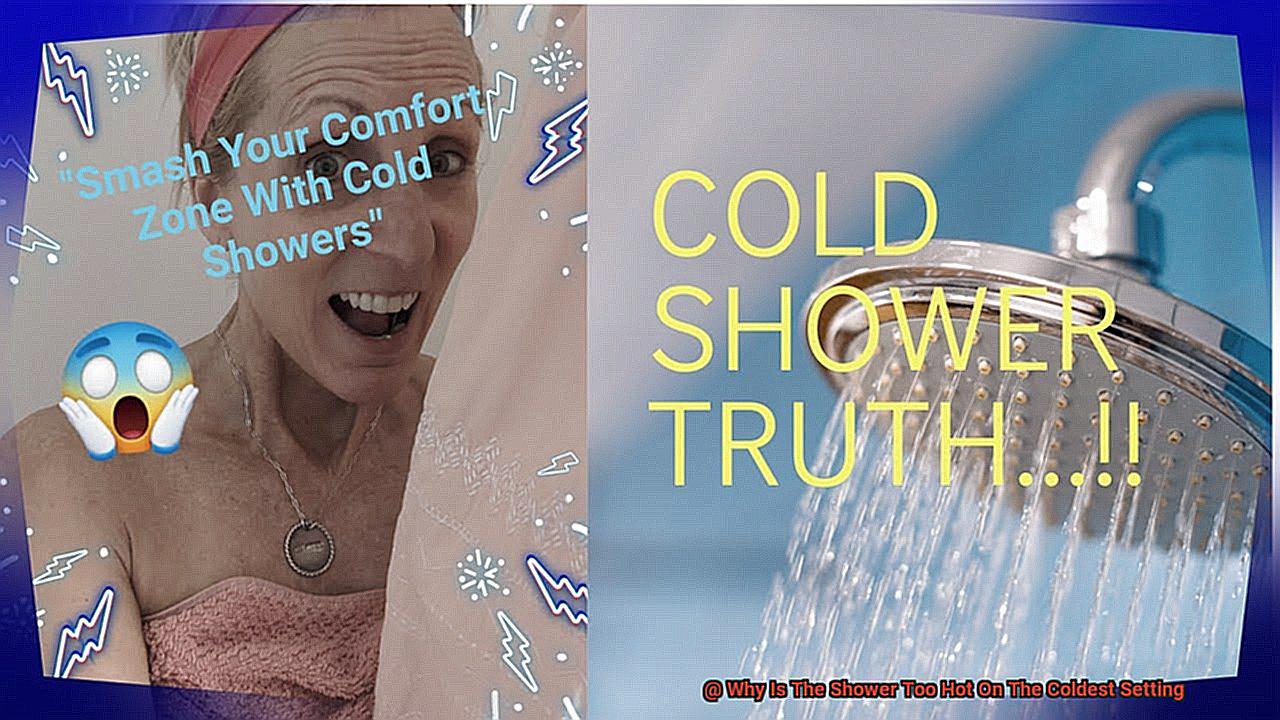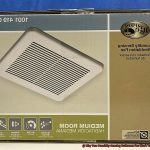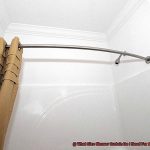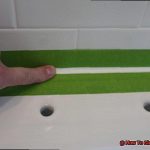You’ve had a long, tiring day and all you want to do is take a refreshing shower to wash away your stress.
But instead of being greeted with cool water, you’re hit with scalding hot water even though the temperature dial is set to the coldest setting. Not only is this frustrating and uncomfortable, but it can also be dangerous.
This issue is all too common in households, yet few people know why it happens. That’s where my expertise as a plumbing professional comes in.
Having encountered this problem countless times, I’m here to share with you the reasons why your shower may be boiling even when set to the coldest temperature. There are several possible causes for this dilemma, ranging from thermostat malfunctions to sediment buildup and faulty valves.
Your shower’s water temperature is directly linked to the heater’s temperature setting, which is controlled by either a thermostat or a valve. If these components aren’t functioning correctly, it could lead to water that’s too hot.
In this blog post, we’ll delve into the underlying reasons why your shower is too hot in the coldest setting. You’ll learn how to identify what’s causing the problem and how to troubleshoot it effectively.
So, keep reading to discover why your shower isn’t cooling down and what steps you can take to fix it once and for all.
Contents
Reasons Why The Shower Is Too Hot On The Coldest Setting
Imagine stepping into the shower expecting a cool and refreshing experience, but instead, you’re met with scorching hot water.
Frustrating, right? If this sounds familiar, you’re not alone.
The good news is that there are several reasons why your shower may be too hot on the coldest setting, and solutions to fix it. One possible cause of this issue is a faulty thermostat.
The thermostat is responsible for regulating the temperature of the water, but if it’s damaged or incorrectly calibrated, it may be causing the water to be hotter than it should be. A malfunctioning thermostat can lead to discomfort and potential injury, especially for children or elderly individuals who are more susceptible to burns.
Another potential culprit could be a problem with the mixing valve. The mixing valve blends hot and cold water to achieve the desired temperature.
If there’s an issue with the valve, it may not allow enough cold water through, leading to hotter water than intended. This can result in a frustratingly hot shower even when set to the coldest setting.
Sediment buildup in your water heater can also cause your shower to be too hot in the coldest setting. Over time, sediment can accumulate in the tank of your water heater, reducing its efficiency and causing it to heat up more than necessary.
This buildup can lead to hotter water coming out of your shower even when it’s set to the coldest temperature. To address these issues promptly, start by checking your thermostats and valves.
You may need to call in a professional plumber if you’re unsure how to do this yourself. Additionally, consider adjusting the temperature on your water heater to see if that helps resolve the problem.
Faulty Thermostat
One common culprit behind a faulty thermostat is mineral deposits building up around the heating element.
Over time, minerals in the water can accumulate and create a layer of scale that interferes with its ability to regulate the water temperature.
This means that even when you turn the dial to the coldest setting, the water may still come out scorching hot. Another reason for a faulty thermostat could be an issue with the temperature sensor.
If the sensor isn’t functioning properly, it may not be able to accurately detect the temperature of the water, causing it to send incorrect signals to the thermostat.
Before replacing the thermostat, it’s essential to rule out any other possible causes of the problem, such as a clogged showerhead or a malfunctioning mixing valve.
However, if it turns out that your thermostat is indeed faulty, then it may need to be replaced.
It’s important to note that attempting to fix a faulty thermostat yourself can be dangerous and may cause further damage to your plumbing system.
Therefore, it’s best to call in a professional plumber who can diagnose and fix the problem safely.
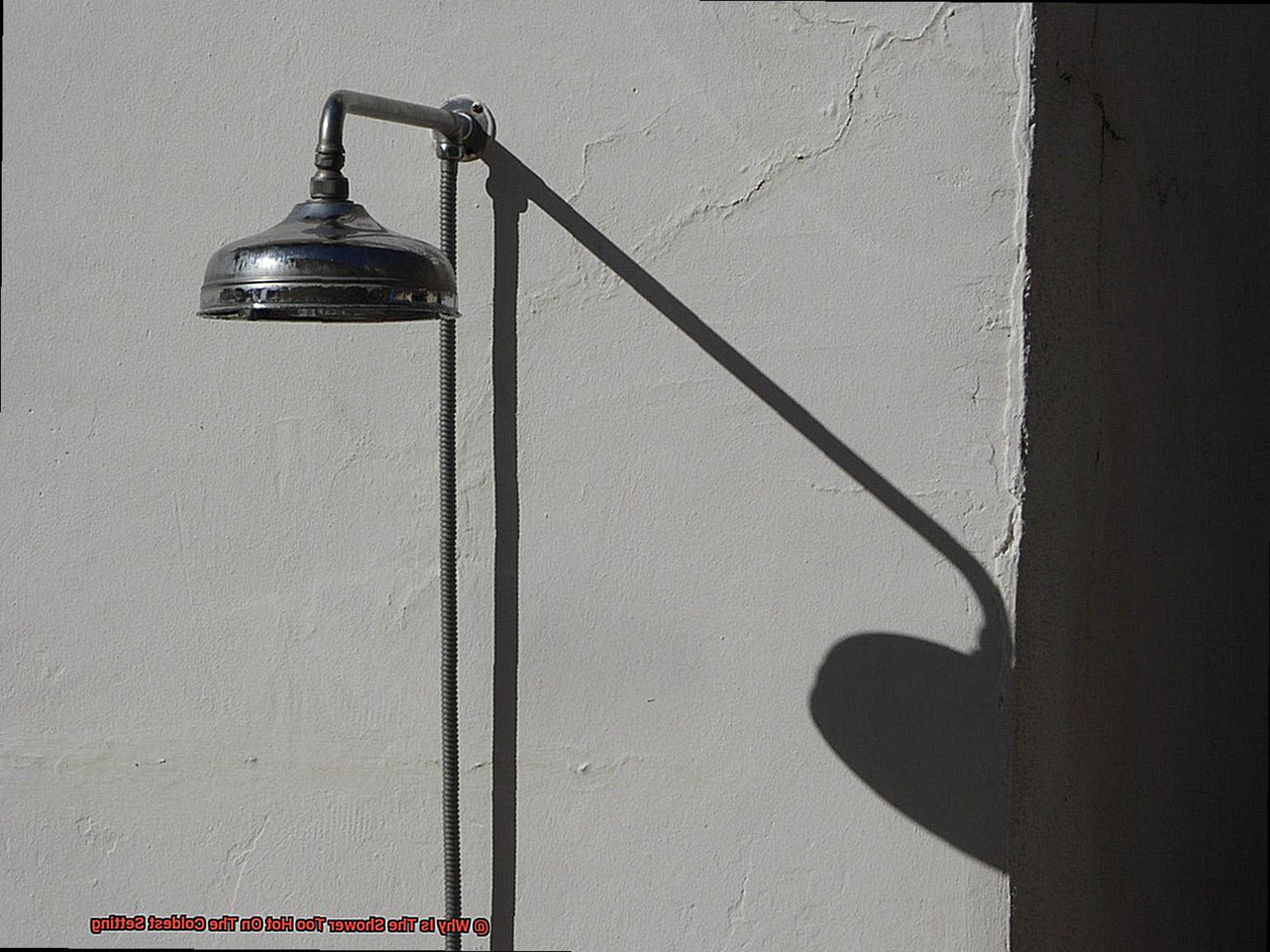
So, don’t let a faulty thermostat ruin your shower experience.
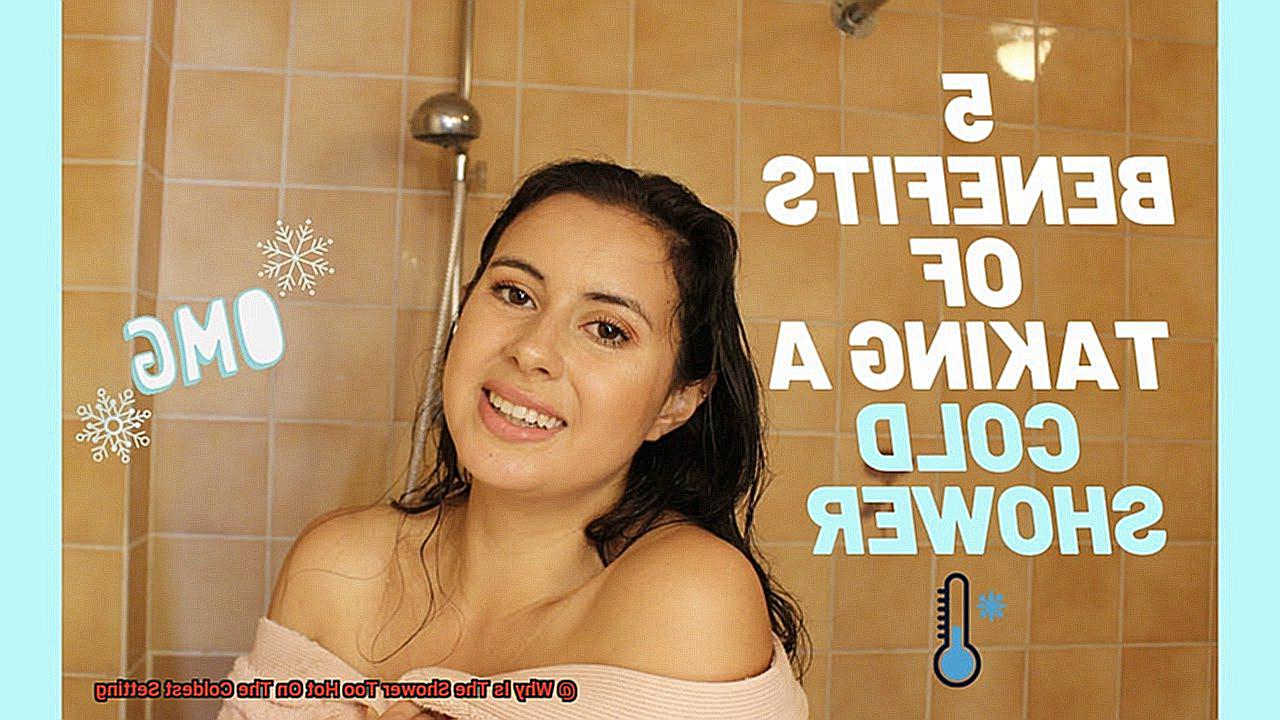
Contact a licensed plumber who can help diagnose and resolve this issue promptly.
Malfunctioning Mixing Valve
If yes, you might have a malfunctioning mixing valve to blame.
The mixing valve plays a crucial role in regulating the water temperature that comes out of your showerhead. It works by combining hot and cold water to achieve the desired temperature.
However, if it malfunctions, it can cause the water to be too hot, no matter how much you turn down the temperature. A worn-out valve or a faulty thermostat are common culprits behind a malfunctioning mixing valve.
These issues prevent the valve from properly mixing hot and cold water, resulting in water that is too hot. Replacing your mixing valve can fix this problem.
While it’s best to leave this job to a professional plumber, if you’re handy with plumbing, you could try replacing it yourself by purchasing a replacement mixing valve from a hardware store. It is essential to note that a malfunctioning mixing valve can also cause water that is too cold in the hottest setting.
Therefore, make sure to check both ends of the temperature spectrum when troubleshooting this issue. In conclusion, a malfunctioning mixing valve can ruin your shower experience.
Water Heater Temperature Setting
It’s uncomfortable, and it can even be dangerous.
But did you know that the temperature setting on your water heater could be the culprit? The temperature dial on your water heater allows you to adjust the temperature of your hot water.
However, if it’s set too high, it can cause your shower water to be scalding hot. For most households, the recommended temperature range is between 120-140 degrees Fahrenheit.
Anything higher than that can increase energy consumption and pose a safety hazard. To avoid getting burned in the shower, start by checking the temperature setting on your water heater.
It may take some trial and error to find the right temperature setting that works for you, but it’s important to ensure that it’s not set too high for safety reasons. Adjust it as necessary until you find a comfortable and safe temperature.
But what if adjusting the temperature doesn’t work? Another factor that can impact the temperature of your shower is the distance between your water heater and your shower.
The farther away your shower is from the water heater, the longer it takes for hot water to reach it. This means that you may have to wait longer for hot water to flow through the pipes before you can adjust the temperature.
To solve this problem, consider installing a recirculating pump or moving your water heater closer to your shower.
So, hot water in your shower can be frustrating and even dangerous.
Troubleshooting Steps for Fixing the Problem
There are easy troubleshooting steps that you can take to fix this problem and get back to enjoying your showers.
Firstly, check the temperature control valve. This valve is responsible for regulating the temperature of the water and ensuring that it doesn’t become too hot or too cold.
If this valve is faulty, it may be allowing too much hot water into the shower. Even when set to the coldest setting, you’ll be left with a hot shower.
To check this valve, turn off the water supply to the shower and remove the handle and trim plate from the valve. Inspect the cartridge and other components to see if they need replacement.
Another potential cause of a hot shower on the coldest setting is a faulty mixing valve. This valve blends hot and cold water before it reaches the showerhead.
If it’s not working correctly, it may be allowing too much hot water into the mix, resulting in a hotter-than-expected shower. To troubleshoot this issue, turn off the water supply to the shower and remove the faceplate from the mixing valve.
Inspect the valve and its components for any damage or wear. Sometimes, an overly hot shower in the coldest setting can be caused by an issue with your water heater.
If your heater is set to a high temperature, it may be sending overly hot water to your shower, even when set to the coldest setting. To fix this problem, check your heater’s thermostat and adjust it as needed.
It may also be helpful to flush your heater’s tank periodically to remove any sediment or debris that could be affecting its performance. Ultimately, there are several potential causes of a shower that is too hot in the coldest setting.
However, by checking the temperature control valve, mixing valve, and water heater, you can often identify and fix the problem.
How to Check Your Thermostats and Valves
Checking the Temperature Control Valve
The temperature control valve is responsible for regulating the temperature of the water that flows through your shower.
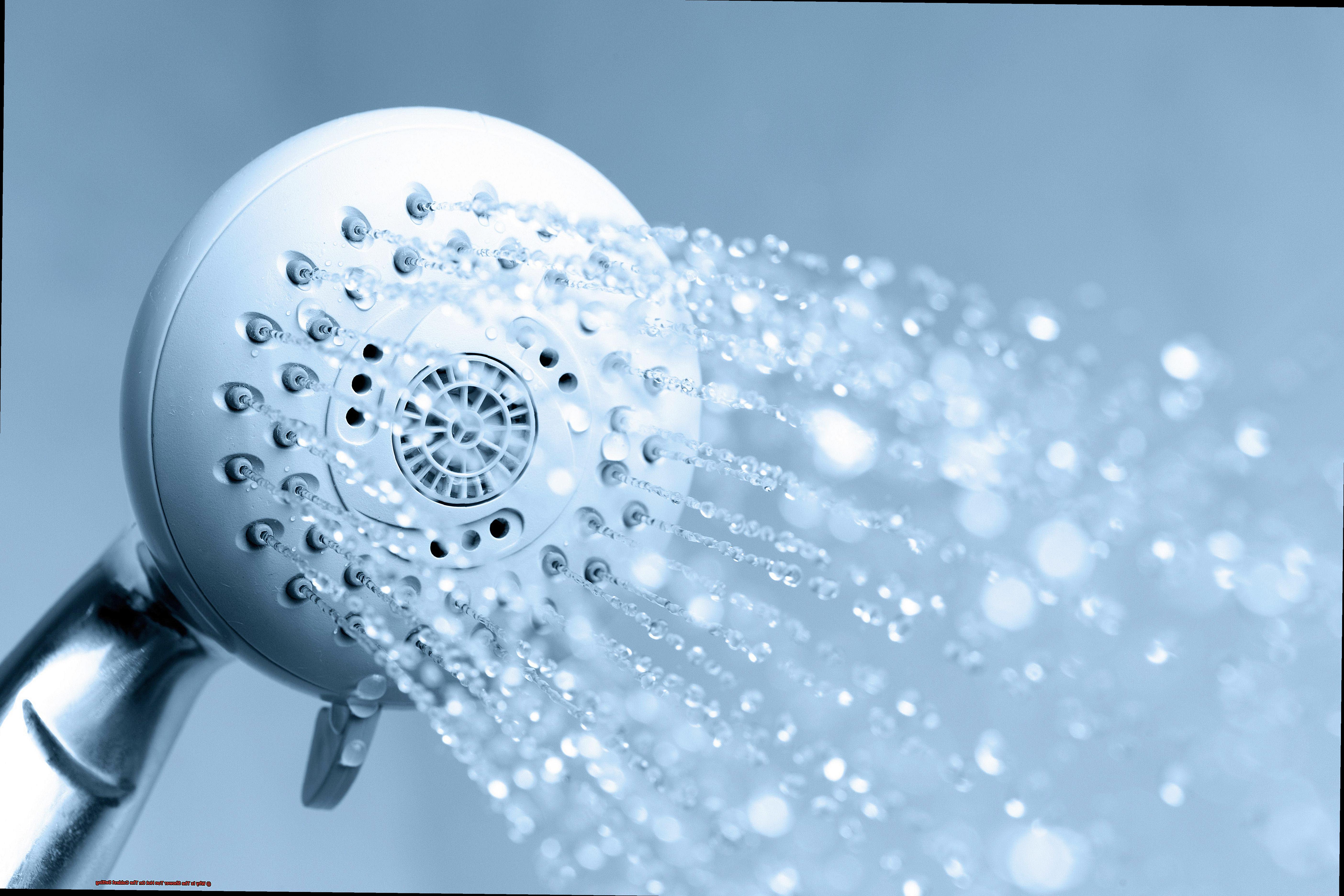
If it’s not functioning correctly, you may experience hot water even when you’ve set the temperature to the coldest setting. To check this valve, turn off the water supply to your shower and remove the handle and trim plate from the valve.
Inspect the cartridge and other components to see if they need replacement. If you notice any damage or wear, it’s best to replace them with new parts.
Inspecting the Mixing Valve
The mixing valve blends hot and cold water before it reaches your showerhead.
If it’s not working correctly, it may be allowing too much hot water into the mix, resulting in a hotter-than-expected shower. To troubleshoot this issue, turn off the water supply to your shower and remove the faceplate from the mixing valve.
Inspect the valve and its components for any damage or wear. If you notice any issues, consider replacing them with new parts.
Checking Your Water Heater
Sometimes, an overly hot shower in the coldest setting can be caused by an issue with your water heater.
If your heater is set to a high temperature, it may be sending overly hot water to your shower, even when set to the coldest setting. To fix this problem, check your heater’s thermostat and adjust it as needed.
It may also be helpful to flush your heater’s tank periodically to remove any sediment or debris that could be affecting its performance.
Hiring a Professional Plumber
While some homeowners may feel comfortable checking their thermostats and valves themselves, others may prefer to hire a professional plumber for this task.
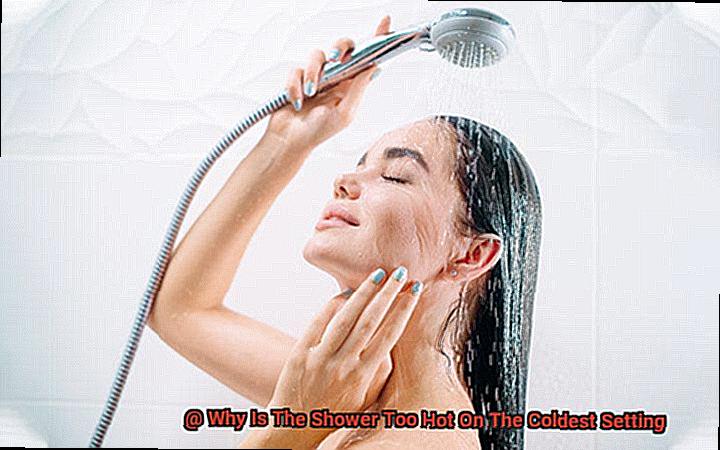
A plumber can inspect all of your plumbing components thoroughly and identify any issues that need fixing. They can also provide advice on how to maintain your plumbing system to prevent future problems.
If you’re unsure about how to check your thermostats and valves, or if you notice any other plumbing issues, it’s best to contact a professional plumber for assistance.
Adjusting the Temperature on Your Water Heater
Adjusting the temperature of your water heater might just be the solution to your problems.
Here’s what you need to know: First and foremost, it’s important to understand that the temperature of the water coming out of your shower is directly related to the temperature setting on your water heater.
So, if you’re experiencing boiling water, it’s likely that your water heater temperature is set too high. To adjust the temperature, locate the temperature dial on the front or side of the water heater near the bottom.
Once you find it, turn it down to a lower temperature setting. Experts recommend setting it between 120-125 degrees Fahrenheit to prevent scalding.
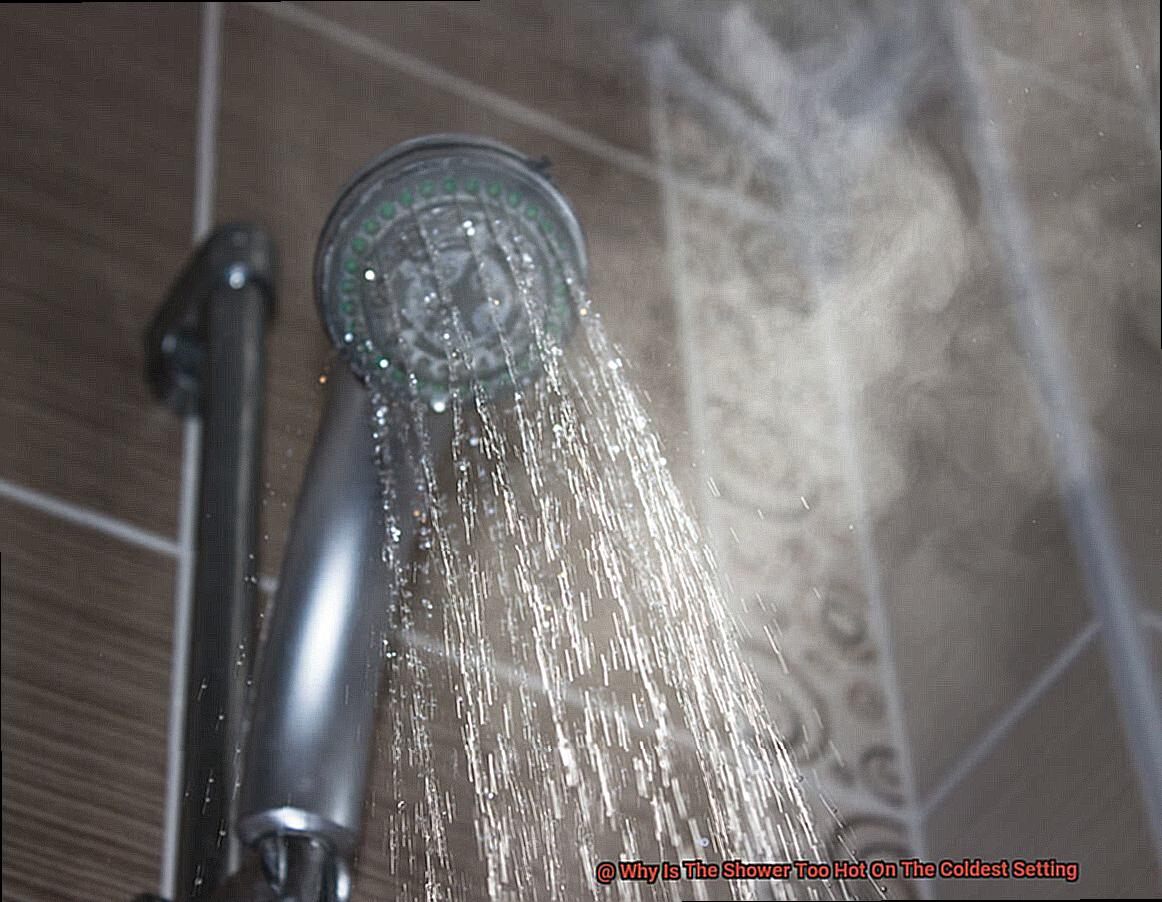
It’s important to keep in mind that adjusting the temperature of your water heater may take some time to take effect. You may need to wait a few hours or even a day for significant changes.
But trust us, it’s worth it. Moreover, if you live in an area with hard water, periodic flushing of your water heater can help remove any buildup that could affect its efficiency.
This will not only improve the performance of your water heater but also increase its lifespan. If you’re unsure about adjusting the temperature or experiencing any other plumbing issues, don’t hesitate to consult with a professional plumber.
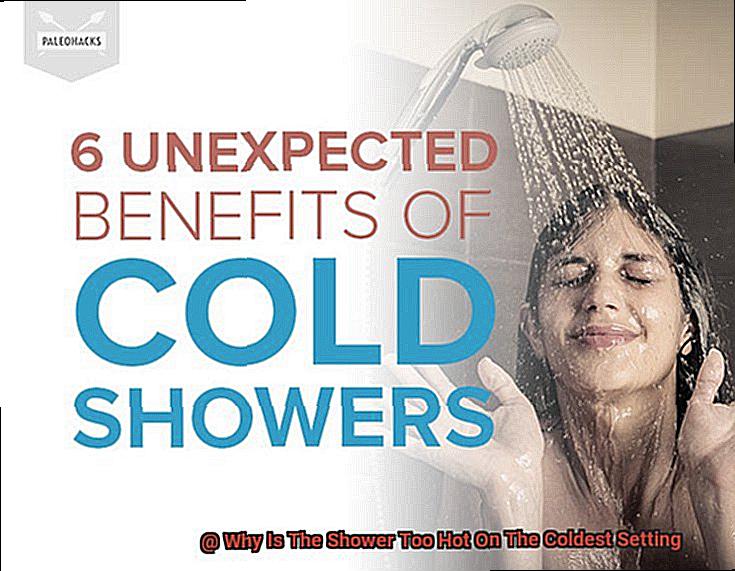
They can assess your specific situation and provide recommendations for solutions that will work best for you.
Potential Dangers of Scalding Hot Water
Scalding hot water might seem like a minor inconvenience, but it can be a serious threat to your safety, particularly if you have children or elderly individuals in your household.
In fact, according to the Centers for Disease Control and Prevention (CDC), nearly 5,000 people are treated in emergency rooms annually for scalding burns caused by hot tap water. This statistic is a grim reminder of the potential dangers of scalding hot water and why it’s essential to take precautions to prevent accidents from happening.
One of the most significant dangers of scalding hot water is the possibility of burns that can occur suddenly and without warning. This can be particularly hazardous for young children or elderly individuals who may not be able to react quickly enough to avoid harm.
Additionally, it can cause permanent damage or even death in extreme cases. To prevent these accidents from happening, there are several precautions you can take.
Installing anti-scald devices in your shower or bath is one way to ensure that the water temperature stays consistent and safe for everyone to use. These devices automatically adjust the water temperature to prevent sudden temperature changes, making it safer for everyone.
Another way to prevent scalding accidents is by setting the water heater temperature no higher than 120 degrees Fahrenheit.
Doing so will prevent scalding hot water from coming out of the faucet even if someone accidentally turns up the heat on the coldest setting.
It’s also crucial to educate children and elderly individuals about the potential dangers of scalding hot water and how to prevent accidents from happening.
This includes teaching them not to touch the faucet handles or adjust the temperature themselves and supervising them while they are in the shower.
By installing anti-scald devices, setting your water heater temperature appropriately, and educating your loved ones about potential dangers, you can help keep everyone safe while using the shower.
Conclusion
In conclusion, scalding hot water in your shower can be both frustrating and dangerous.
As a plumbing expert, I’ve come across this issue countless times and identified several possible culprits, including faulty thermostats, malfunctioning mixing valves, and overly high water heater temperature settings. But fear not.
There are steps you can take to troubleshoot and fix the problem. It’s crucial to understand the importance of thermostats and valves in regulating water temperature and flow in your shower.
Regular maintenance of these components can prevent wear and tear or buildup that may affect their efficiency. By checking the temperature control valve, mixing valve, and hot water heater, you can identify the source of the issue and make necessary repairs.
However, preventing scalding burns caused by hot tap water is equally important. Installing anti-scald devices in your shower or bath, setting appropriate water heater temperatures (between 120-125 degrees Fahrenheit), and educating children and elderly individuals about potential dangers are some precautions that can help prevent accidents from happening.
Don’t let scalding hot showers ruin your day – take proactive measures to troubleshoot issues with hot water in your shower.

